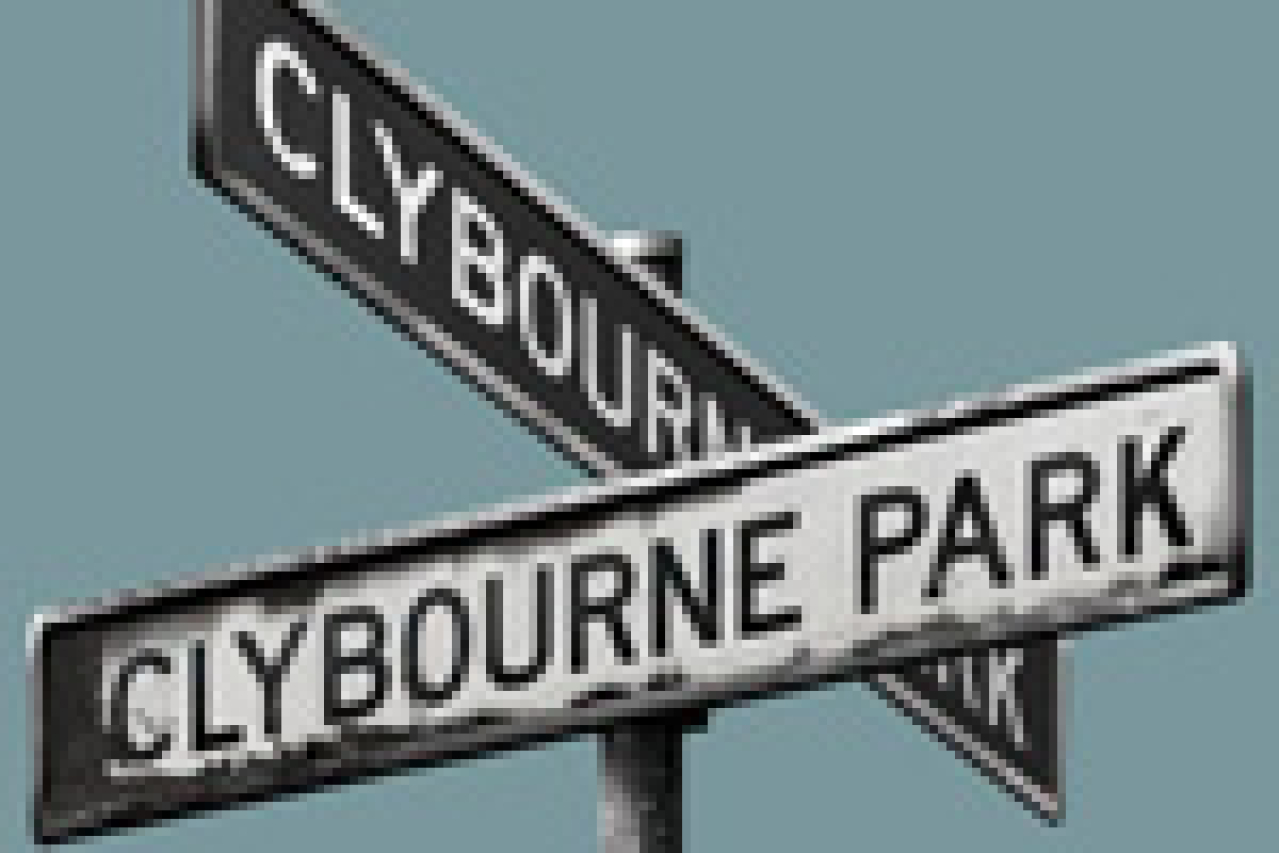Clybourne Park

in Clybourne Park
(© Nathan Johnson)
With the often-scathing, hilarious, and thought-provoking satire, Clybourne Park, now at Broadway’s Walter Kerr Theatre — two years after its world premiere at Playwrights Horizons — playwright Bruce Norris proves once again why he’s one of the theater world’s shining lights, and why this play was so deserving of the 2011 Pulitzer Prize. And Pam McKinnon’s expertly directed, thrillingly acted production does this extraordinary work full justice.
No doubt, there will be plenty of post-show discussion about the themes of racism and social change that Norris explores in the play — while simultaneously splitting open your sides — but savvy theatergoers will also be talking about the playwright’s gifts for ingenuity and craftsmanship.
The play is set in two acts — the first in 1959, the second in 2009 — in the same home in Chicago’s Clybourne Park neighborhood (superbly designed by Daniel Ostling). Both acts begin rather benignly, almost superficially, before Norris goes in for the sucker punch, leading to startling denouements which are beautifully realized.
At the start of Act I, long-married Russ (Frank Wood, who implodes beautifully before exploding stunningly) and Bev (Christina Kirk, pricelessly sunny) are having a lengthy conversation about the derivation of the word ‘Neapolitan.” It’s a gambit reminiscent of one of Edward Albee’s plays; and while there will be no bloody goats or imaginary children here, Norris is no more interested in a standard exploration of marriage than Albee is.
In fact, the first hint of what Norris has on his mind is the announcement by the couple’s African-American maid Francine (the excellent Crystal A. Dickinson) that Mr. Karl Lindner is on the phone — the same Karl Lindner that Lorraine Hansberry introduced in her landmark play, A Raisin in the Sun.
Sure enough, the boorish Karl (superbly detailed by Jeremy Shamos) will eventually arrive at the couple’s home — accompanied by his good-natured, very pregnant, deaf wife Betsy (sweetly played by Annie Parisse) — to fuel the firestorm over a “colored” family moving into the neighborhood. And not even the presence of local minister Jim (the fine Brendan Griffin) can calm Russ’ temper.
While Bev and Russ turn out to be less overtly racist than Karl and his ilk — as proven by Bev’s seemingly well-meaning dealings with Francine and her husband Albert (the first-rate Damon Gupton), the color of their buyers’ skin is not their man concern. What is important to them — notably to Russ — is the community’s reaction to the personal tragedy that has caused the couple to hastily abandon their comfortable life and created the possibly unnavigable chasm that has opened up between them.
Half a century later in Act II, whites have not only repopulated the now-gentrified Clybourne Park neighborhood, but are perhaps insidiously (if unwittingly) erasing local history. We soon learn that yuppie couple Steve and Lindsey (Shamos and Parisse, both of whose work has grown stronger and more subtle since 2010) are planning to tear down the old Younger home, which raises the hackles of neighbors Lena (Dickinson, gloriously fiery) and her husband Kevin (Gupton), who have their own connection to the house.
What begins as a seemingly civil discussion about easements and property lines — one which includes obtuse lawyer Kathy (Kirk, marvelously self-centered) and harried realtor Tom (Griffin) — deteriorates spectacularly as unbelievably offensive jokes are exchanged, facades are exposed, and long-buried and long-forgotten reminders of the past are literally uncovered.
What’s so brave about Norris is that he’s not worried about pushing the envelope; in fact, he shoves it so hard that the audience has no choice but to gasp in both horror and amazement.
And then, in a coup de grace, he leaves us with a devastating final scene (set back in 1959) that reminds us all that the past — and present — are often far more complicated than they initially appear.











